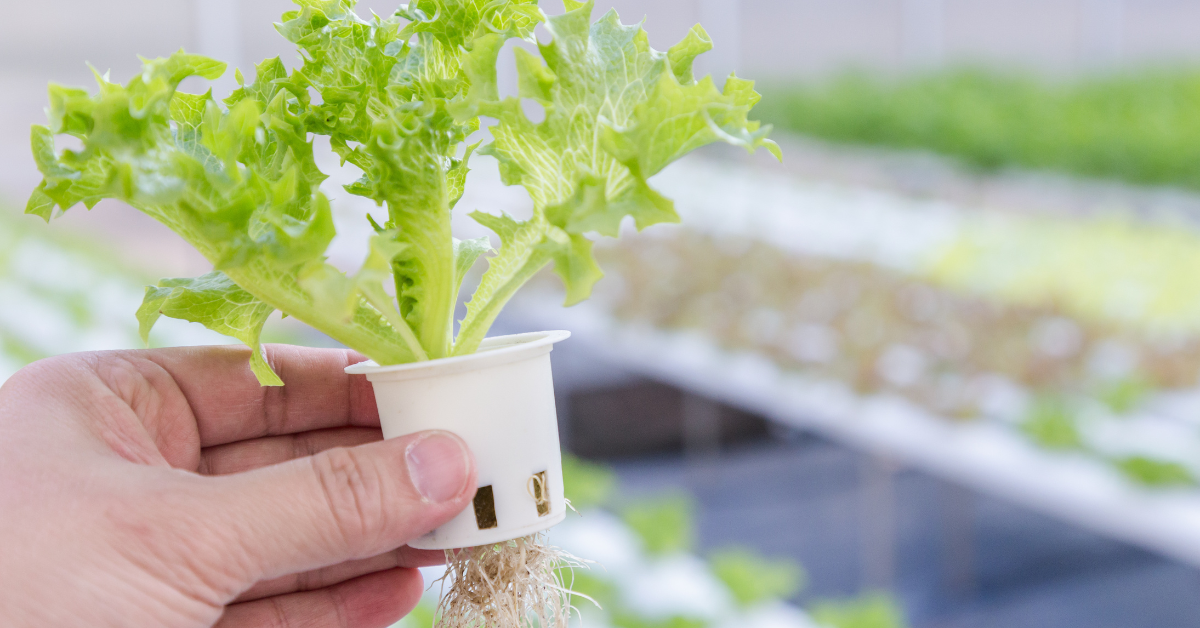Hydroponic farming, a soilless cultivation method, is gaining widespread attention for its innovative approach to plant growth. By providing essential nutrients directly to plant roots via nutrient-rich water solutions, hydroponic systems eliminate the need for traditional soil mediums. This technique revolutionises agriculture by offering a controlled environment where factors like temperature, light, and nutrient levels can be meticulously regulated, resulting in accelerated growth and higher yields compared to conventional farming methods.
In recent years, hydroponic farming has experienced a surge in popularity due to its numerous benefits and advancements in technology. From increased crop yields and water efficiency to reduced environmental impact and customisable growing conditions, hydroponic systems offer a sustainable and efficient alternative to traditional soil-based farming practices. This growing interest is fueled by the desire for fresh, pesticide-free produce and the need to address challenges such as water scarcity and land constraints.
One of the primary advantages of hydroponic farming is its ability to produce higher yields in limited spaces compared to traditional agriculture. By optimising nutrient delivery and environmental conditions, hydroponic systems enable year-round cultivation of a wide range of crops, regardless of seasonal changes. Additionally, the controlled nature of hydroponic environments minimises the risk of pests and diseases, reducing the need for chemical pesticides and promoting healthier produce.
While hydroponic farming offers numerous benefits, it also presents certain challenges and disadvantages. Initial investment costs for equipment and infrastructure can be significant, particularly for large-scale commercial operations. Moreover, maintaining optimal nutrient levels and environmental conditions requires careful monitoring and expertise, which may pose challenges for inexperienced growers. Additionally, concerns regarding the sustainability and environmental impact of hydroponic systems warrant further research and consideration.
Understanding Hydroponic Farming
Hydroponic farming, a modern approach to agriculture, revolutionises plant cultivation by eliminating soil and instead utilising nutrient-rich water solutions. This method offers precise control over growing conditions, resulting in accelerated plant growth and higher yields compared to traditional farming methods.
Definition and Principles
Hydroponic farming operates on the principle of delivering essential nutrients directly to plant roots through water solutions. By bypassing soil, plants can access nutrients more efficiently, leading to faster growth rates and increased productivity. This method relies on carefully balanced nutrient solutions to provide plants with all the elements they need for healthy development.
Types of Hydroponic Systems
There are several types of hydroponic systems, each offering unique advantages and suitability for different growing environments:
1. Deep Water Culture (DWC)
In DWC systems, plants are suspended in nutrient-rich water, allowing their roots to access oxygen and nutrients continuously. This method is simple and low-maintenance, making it ideal for beginners.
2. Nutrient Film Technique (NFT)
NFT systems involve a continuous flow of nutrient solution over plant roots, creating a thin film of water. This method maximises oxygen uptake while minimising water usage, making it efficient for growing leafy greens and herbs.
3. Ebb and Flow (Flood and Drain)
Ebb and flow systems periodically flood plant roots with nutrient solution before draining it away. This cyclical process ensures sufficient nutrient uptake while preventing waterlogging, making it versatile for a variety of crops.
4. Aeroponics
Aeroponic systems mist plant roots with nutrient solution, allowing them to absorb nutrients directly from the air. This method promotes rapid growth and is highly efficient in water usage, making it suitable for delicate plants like strawberries and lettuce.
Hydroponic Farming Benefits
Hydroponic farming offers numerous benefits, including:
- Increased Crop Yields: Hydroponically grown plants typically yield more produce compared to traditional farming methods.
- Water Efficiency: Hydroponic systems use significantly less water than soil-based agriculture, making them ideal for regions with water scarcity.
- Space Utilisation: Hydroponic farming can be implemented in limited spaces, making it suitable for urban areas and areas with limited arable land.
- Year-Round Production: With hydroponic systems, farmers can cultivate crops year-round, regardless of seasonal changes.
- Reduced Environmental Impact: By eliminating soil and reducing water usage, hydroponic farming minimises environmental degradation and soil erosion.
- Customisable Growing Conditions: Hydroponic systems allow precise control over environmental factors such as pH levels, temperature, and nutrient levels, maximising plant growth potential.
Advantages of Hydroponic Farming
Hydroponic farming offers a multitude of advantages over traditional soil-based agriculture, making it an increasingly popular choice for modern farmers. Let’s delve into some of the key benefits:
Increased Crop Yield
One of the most notable advantages of hydroponic farming is its ability to significantly increase crop yields. By providing plants with precisely balanced nutrient solutions and optimal growing conditions, hydroponic systems foster accelerated growth rates and enhanced productivity. This means farmers can harvest more produce per square foot compared to traditional farming methods, maximising their output and profitability.
Water Efficiency
Hydroponic farming stands out for its exceptional water efficiency. Unlike soil-based agriculture, which often results in water wastage due to runoff and evaporation, hydroponic systems recirculate water, minimising loss and maximising usage. Additionally, by delivering nutrients directly to plant roots, hydroponics ensures plants receive precisely the amount of water they need, reducing water consumption while promoting healthier growth.
Controlled Environment Benefits
Another significant advantage of hydroponic farming lies in its ability to provide a controlled environment for plant growth. Hydroponic systems allow farmers to regulate key factors such as temperature, humidity, and light levels, creating optimal conditions for plant development. This precise control minimises the risk of pests and diseases, reduces the need for chemical pesticides, and ensures consistent crop quality throughout the growing cycle.
Space-Saving Capabilities
Hydroponic farming excels in space utilisation, making it an ideal choice for urban agriculture and areas with limited arable land. By eliminating the need for soil and utilising vertical growing systems, hydroponic farms can maximise production in small spaces. This space-saving capability enables farmers to cultivate crops in urban environments, closer to consumers, reducing transportation costs and carbon emissions associated with food distribution.
Disadvantages of Hydroponic Farming
While hydroponic farming offers numerous benefits, it also comes with its fair share of challenges and disadvantages that farmers must consider before adopting this innovative cultivation method. Let’s explore some of the key drawbacks:
Initial Setup Costs
One of the primary disadvantages of hydroponic farming is the substantial initial investment required for setup. Hydroponic systems typically involve specialised equipment such as nutrient solution reservoirs, pumps, grow lights, and monitoring devices, all of which can be costly to purchase and install. Additionally, infrastructure expenses such as climate-controlled facilities and irrigation systems further add to the upfront costs, making it a barrier for some farmers, especially those with limited resources.
Technical Knowledge Required
Another challenge associated with hydroponic farming is the need for technical expertise and specialised knowledge. Unlike traditional soil-based agriculture, which relies on natural processes and intuitive farming practices, hydroponic systems require careful monitoring and management of nutrient levels, pH balance, temperature, and humidity. Farmers must possess a deep understanding of hydroponic techniques and principles to optimise plant growth and prevent issues such as nutrient deficiencies, root rot, and pest infestations.
Vulnerability to Power Outages
Hydroponic systems are highly dependent on electricity to power essential components such as pumps, grow lights, and climate control systems. As such, they are vulnerable to disruptions caused by power outages or electrical failures. A sudden loss of power can disrupt nutrient delivery, interrupt lighting cycles, and compromise environmental conditions, potentially leading to crop damage or loss. Farmers must implement backup power solutions or contingency plans to mitigate the risk of power-related issues and ensure the continuity of their operations.
Environmental Impact
Hydroponic farming not only offers numerous benefits for crop production but also has a positive environmental impact, contributing to sustainability and conservation efforts. Let’s explore some of the key ways in which hydroponic farming minimises environmental impact:
Reduced Water Usage
One of the most significant environmental advantages of hydroponic farming is its efficient use of water. Unlike traditional soil-based agriculture, which often relies heavily on irrigation and can result in water wastage due to runoff and evaporation, hydroponic systems recirculate water, minimising consumption. By delivering nutrient solutions directly to plant roots, hydroponics ensures that water is used more efficiently, reducing overall water usage and alleviating pressure on freshwater resources.
Minimised Soil Erosion
Hydroponic farming eliminates the need for soil, thereby minimising soil erosion, a significant environmental concern associated with conventional agriculture. Soil erosion occurs when topsoil is washed away by water or wind, leading to loss of fertile land and degradation of ecosystems. By growing plants without soil, hydroponic systems prevent erosion and preserve soil integrity, ensuring long-term sustainability of agricultural land.
Potential for Sustainable Practices
Hydroponic farming offers the potential for implementing sustainable agricultural practices that prioritise environmental stewardship and resource conservation. By optimising growing conditions and minimising reliance on external inputs such as chemical fertilisers and pesticides, hydroponic systems can reduce the environmental footprint of farming operations. Additionally, hydroponic farms can incorporate renewable energy sources such as solar power to further enhance sustainability and minimise carbon emissions.
Comparing Hydroponic Farming with Traditional Methods
When it comes to agriculture, farmers have several options to choose from, including traditional soil-based farming and modern hydroponic techniques. Let’s compare these two approaches across key factors to understand their differences and advantages:
Yield Comparison
Hydroponic Farming Benefits: Hydroponic farming often outperforms traditional methods in terms of crop yield. By providing plants with precisely balanced nutrient solutions and optimal growing conditions, hydroponic systems can promote faster growth rates and higher yields compared to soil-based agriculture. Additionally, hydroponic systems allow for year-round cultivation, further maximising productivity.
Traditional Farming Considerations: Traditional farming methods rely on soil fertility and natural conditions for crop growth. While traditional farming can be highly productive under ideal circumstances, it is often subject to seasonal variations, weather conditions, and soil quality, which can impact yields. Moreover, traditional farming may require larger land areas to achieve comparable yields to hydroponic systems.
Resource Consumption Analysis
Hydroponic Farming Benefits: Hydroponic farming is known for its efficient use of resources, particularly water. Unlike traditional farming, which can result in water wastage due to runoff and evaporation, hydroponic systems recirculate water, minimising consumption. Additionally, hydroponic systems eliminate the need for soil, reducing land requirements and mitigating soil erosion.
Traditional Farming Considerations: Traditional farming methods can be resource-intensive, requiring significant amounts of water, fertilisers, and pesticides to maintain crop health and productivity. Soil erosion and nutrient depletion are common issues associated with traditional agriculture, leading to long-term environmental degradation. Moreover, traditional farming may require larger land areas to achieve comparable yields to hydroponic systems.
Labor Requirements
Hydroponic Farming Benefits: Hydroponic systems can be designed to minimise labor requirements through automation and efficient management techniques. With technologies such as automated nutrient delivery systems and climate control devices, hydroponic farms can streamline operations and reduce the need for manual labor. This can result in cost savings and increased efficiency for farmers.
Traditional Farming Considerations: Traditional farming methods often require significant manual labor for tasks such as planting, weeding, and harvesting. Labor-intensive practices can increase operational costs and labor dependency, particularly for large-scale agricultural operations. Additionally, traditional farming may be more susceptible to labor shortages, seasonal fluctuations, and workforce challenges.
Conclusion
hydroponic farming offers a plethora of advantages that make it a compelling choice for modern agriculture. From increased crop yields and water efficiency to controlled environment benefits and space-saving capabilities, hydroponic systems present innovative solutions to address the challenges of traditional farming methods. However, it’s essential to acknowledge the disadvantages, such as high initial setup costs, technical knowledge requirements, and vulnerability to power outages. By carefully weighing these pros and cons, farmers can make informed decisions about adopting hydroponic farming practices.
Despite the challenges, the benefits of hydroponic farming far outweigh the drawbacks. As technology continues to evolve and knowledge expands, hydroponic systems are becoming increasingly accessible and cost-effective. Encouraging further exploration and adoption of hydroponic farming can lead to sustainable solutions for food production, resource conservation, and environmental stewardship. By embracing innovation and leveraging the potential of hydroponic technology, farmers can enhance productivity, profitability, and sustainability in agriculture.
The future of hydroponic farming is bright and promising. With advancements in technology, increased awareness of environmental sustainability, and growing demand for locally grown produce, hydroponic systems are poised to play a significant role in the future of food production. By integrating hydroponic farming techniques into existing agricultural practices and exploring new avenues for innovation, we can create a more resilient, efficient, and environmentally friendly food system for generations to come.
FAQs
What are the benefits of hydroponic farming?
Hydroponic farming offers numerous benefits, including increased crop yields, water efficiency, controlled environment benefits, and space-saving capabilities. It also allows for year-round cultivation, reduces the risk of soil-borne diseases, and minimises the need for pesticides.
How does hydroponic farming work?
Hydroponic farming involves growing plants without soil, using nutrient-rich water solutions to deliver essential nutrients directly to plant roots. Various hydroponic systems, such as deep water culture, nutrient film technique, and aeroponics, provide different methods for nutrient delivery and plant support.
Is hydroponic farming cost-effective?
While hydroponic farming requires initial setup costs, it can be cost-effective in the long run due to increased crop yields, efficient resource utilisation, and reduced labor requirements. However, the cost-effectiveness may vary depending on factors such as system size, crop selection, and operational efficiency.
What plants can be grown hydroponically?
A wide variety of plants can be grown hydroponically, including vegetables (lettuce, tomatoes, peppers), herbs (basil, cilantro, mint), fruits (strawberries, cucumbers), and even flowers (roses, orchids). Hydroponic systems can accommodate the diverse needs of different plant species.
What are the disadvantages of hydroponic farming?
Disadvantages of hydroponic farming include high initial setup costs, technical knowledge requirements, vulnerability to power outages, and dependency on technology. Additionally, maintaining proper nutrient levels and pH balance can be challenging, and the risk of system failure exists.
Can hydroponic farming be done at home?
Yes, hydroponic farming can be done at home on a small scale using compact hydroponic systems designed for indoor or outdoor use. With the right equipment, resources, and knowledge, home growers can cultivate a variety of plants hydroponically.
What equipment is needed for hydroponic farming?
Basic equipment for hydroponic farming includes a growing container (such as trays or pots), a nutrient reservoir, a nutrient delivery system (such as a pump), growing medium (such as perlite or rockwool), lighting (if growing indoors), and monitoring devices (for pH, temperature, and humidity).
How much space is required for hydroponic farming?
The space required for hydroponic farming varies depending on factors such as crop selection, system type, and desired yield. Small-scale hydroponic setups can fit in a corner of a room or on a balcony, while larger systems may require dedicated greenhouse space or outdoor areas.
Is hydroponic farming sustainable?
Yes, hydroponic farming can be sustainable when implemented with efficient resource management practices. It reduces water usage, minimises soil erosion, and can be integrated with renewable energy sources to further enhance sustainability. Additionally, hydroponic systems can be designed to recycle and reuse water and nutrients, minimising environmental impact.
What nutrients are used in hydroponic farming?
Hydroponic plants require essential nutrients such as nitrogen, phosphorus, potassium, calcium, magnesium, and trace elements like iron, manganese, and zinc. These nutrients are typically provided in a balanced solution formulated specifically for hydroponic cultivation, ensuring optimal plant growth and development.







[…] benefits of hydroponic farming are manifold. Notably, it allows for higher crop yields in less space compared to traditional […]
[…] this blog post, we will delve into the fundamentals of hydroponic farming, highlight its numerous benefits, and emphasise the significance of a well-crafted business plan for aspiring hydroponic […]